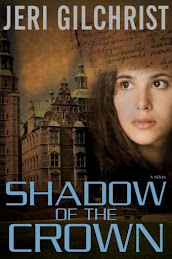In our family, we’re getting ready for a wedding shower. In my attempt to come up with a couple of ice breaker games that aren’t too silly or boring, I searched the internet, grabbed a book and started making notes.
The thing is, the notebook I grabbed was one I’ve had sitting at my bedside for almost a year. It’s been moved around my nightstand from side to side so once I had my notes on wonderful shower games, I looked through it to see why I have been shuffling this particular notebook around and not just putting it away where I would have normally stored it.
“Good grief!” says I, (to myself since no one else was listening) the notebook had all my notes I had taken from a writers conference I had attended last year. They always give you a binder to take notes in, but this notebook was one I had taken myself and set aside because it had some really great useful stuff in it that I could have been using this last year while attempting to write my next book. Why do I always do things the hard way?!?
In my last blog, I shared some things I learned from my other notebook.(The binder I mentioned) Now I’ll share some things I learned from this one. I believe Jeff Savage taught the class and titled it: Villains: Creating characters we love to hate.
The thing that stands out most in my mind is that he mentions a few things I have never considered before. For example: when I think of the bad guy in a story, I picture him with evil, cold looking eyes, a scar across the cheek, a days growth of beard on his dirty, unwashed, face and greasy long hair hanging in his eyes. Can you see him? Maybe that’s a little too stereotypical but you get what I mean, right?
According to Jeff’s idea of a bad guy, picture someone who is charismatic, devious and intelligent. Maybe he has a good side and a bad side with no conscience and feels justified in what they do.
Whoa! A good looking bad guy? Who woulda thought? Okay, some writer’s have, but as a reader, don’t you find that very intriguing? I believe it leaves room to question whether he really is the bad guy or if he is a supporting character put in the story to throw off the reader. In other words, it adds more people to the list of possible suspects for the “who dun nit” list. It keeps the reader guessing. As a reader no one likes to know the outcome by the end of the first couple of pages, right?
In this class, we learned that heroes and villains are very closely tied.
They are both ordinary men who desire extraordinary things. It’s the motives that separate the villains from the heroes.
There are so many more notes with valuable information on this topic. I could go on and on.
Another way to get your reader to understand your villain’s motives is to get the reader to view things from your villain’s eyes. What happened in his life that made him the way he is? What is his actions supposed to accomplish? I think this is where you can help the reader know your villain without stereotyping or merely making your bad guy “look the part”
I guess the point I wanted to make is that it is easy to stereotype a character. Getting inside the head of your character and seeing/showing what makes them tick will help them come alive on the pages of your book for your reader. Their looks and their actions will act as a guide and help the reader get to really know them.
In ending I wanted to share one last note I had taken from the class that stood out to me.
The best villains are like the heroes if the hero had taken a different path. They can make people and hopefully the reader believe their goal was worthy, that they have struggled with their decision.
After attending the class and reading my notes, my villain could use some work, but these ideas get me excited to try some new things. Thanks Jeff, for the great info!
Wednesday, March 23, 2011
Subscribe to:
Post Comments (Atom)


No comments:
Post a Comment